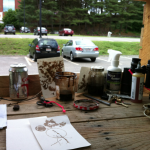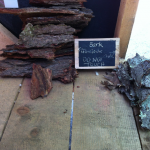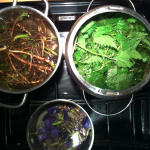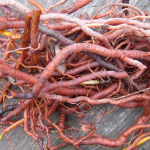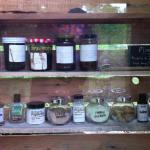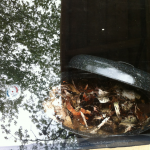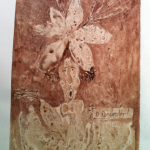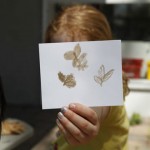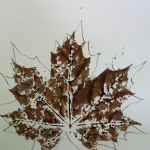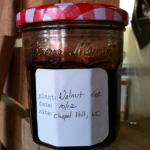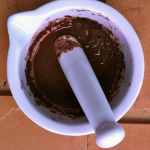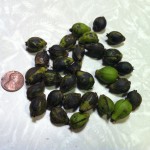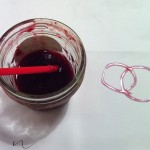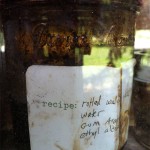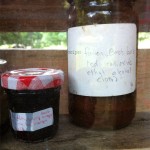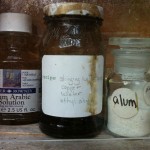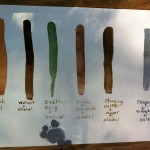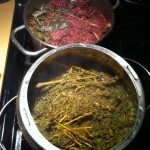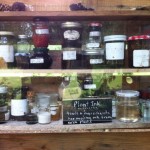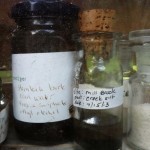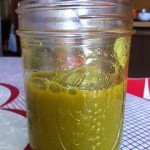Inks
I am making inks from plants in the area of Concord/Lincoln. These include: trees such as oak, walnut, elm, maple, birch; ink cap mushrooms, pokeberries, ferns, and other flowers and leaves.
Researching medieval ink recipes, fibersheds, the agency of plants, plant communication, chemistry, printmaking, and font design.
These inks will be used in the production of field notes, field broadsides, and other works in the Field Station during the residency period.
- ink drawing in the parking lot
- Nuclear Metals Superfund site oak and hemlock bark
- Cherrie Corey’s backyard stinging nettle leaves and roots, plus deCordova iris heads
- madder root
- ink materials shelf, May 2013
- birch bark steeping in solar oven May 2013
- deb todd wheeler ink drawing May 2013
- Birches student observational drawing, April 2013
- early leaf print from walnut ink April 2013
- walnut ink first experiment
- walnut field
- walnut production
- pignut hickory nuts
- Juneberry 07/02
- bottles
- bottles
- bottles
- tests
- Sumac and weld ink steeping
- ink stores on 08/01
- Mill Brook earth pigment
- Weld from Gaining Ground
7/4 Steeped Hemlock ink
Hemlock Bark
rainwater
ethyl acohol
crush Hemlock bark into small pieces with hammer, steep in rainwater for 3 weeks in solar oven, strain out bark bits, simmer to concentrate, add ethyl acohol to preserve
7/17 Sap Green
Buckthorn Berries
rainwater
alum
ethyl alcohol
smash berries, boil alum in water, add to berries, add ethyl alcohol to preserve
08/01 Weld ink
strip all seeds leaves, and flowers from Weld plant, steep in water (do not boil) for at least 24 hours
strain all plant parts
boil 1 T alum in water, add to ink (brings out yellow)
grind calcium carbonate with morter and pestle
add to ink to make a lake
add ethyl alcohol to preserve
08/01 Sumac ink
pluck sumac drupes at full ripeness, and strip all berries from drupe
steep with leaves for a few hours
simmer down to thick paste
add ethyl alcohol to preserve
ink research from Abby, fall 2012
1st February
How to make pigments + suggested plants –> color combinations: http://forgottenknowledge.net/2011/04/natural-pigments/
Ferns with tannic acid: all wood/male ferns–http://en.wikipedia.org/wiki/Dryopteris
tannic acid is found in these ferns’ rhizomes
http://irongallink.org/make-ink/recipes-and-instructions
http://home.insightbb.com/~denevell_books/ferrogallic_ink.htm (at the bottom of the page)
how to quickly make rust
INK MATERIALS
For tannic acid:
Galls
Barks
Blue black color: oak, chestnut, sumac, mountain ash, and cherry trees
Green color: Hemlock and pine trees (can also collect from mimosa, birch, quebracho, and alder)
Horse chestnuts
Pomegranate rinds
Bearberry leaves
Heather
Bloodroot
Alfalfa
Fern rhizomes
Berries
For iron sulfate:
Iron scraps, nails, etc.
For pigments:
Bricks, colored glass, pottery, rust scrapings
Can also experiment with berries (see tannic acid above)
— Anything that can be pulverized, is insoluble (so it won’t react negatively to the binder), and free of organic matter than can decompose or rot
— Further instructions, and step-by-step guides, from this site: http://www.artiscreation.com/Pigment.html
How much to collect?
I am going to assume we want 100g of ink to begin with, and assuming ink has approximately the same …
